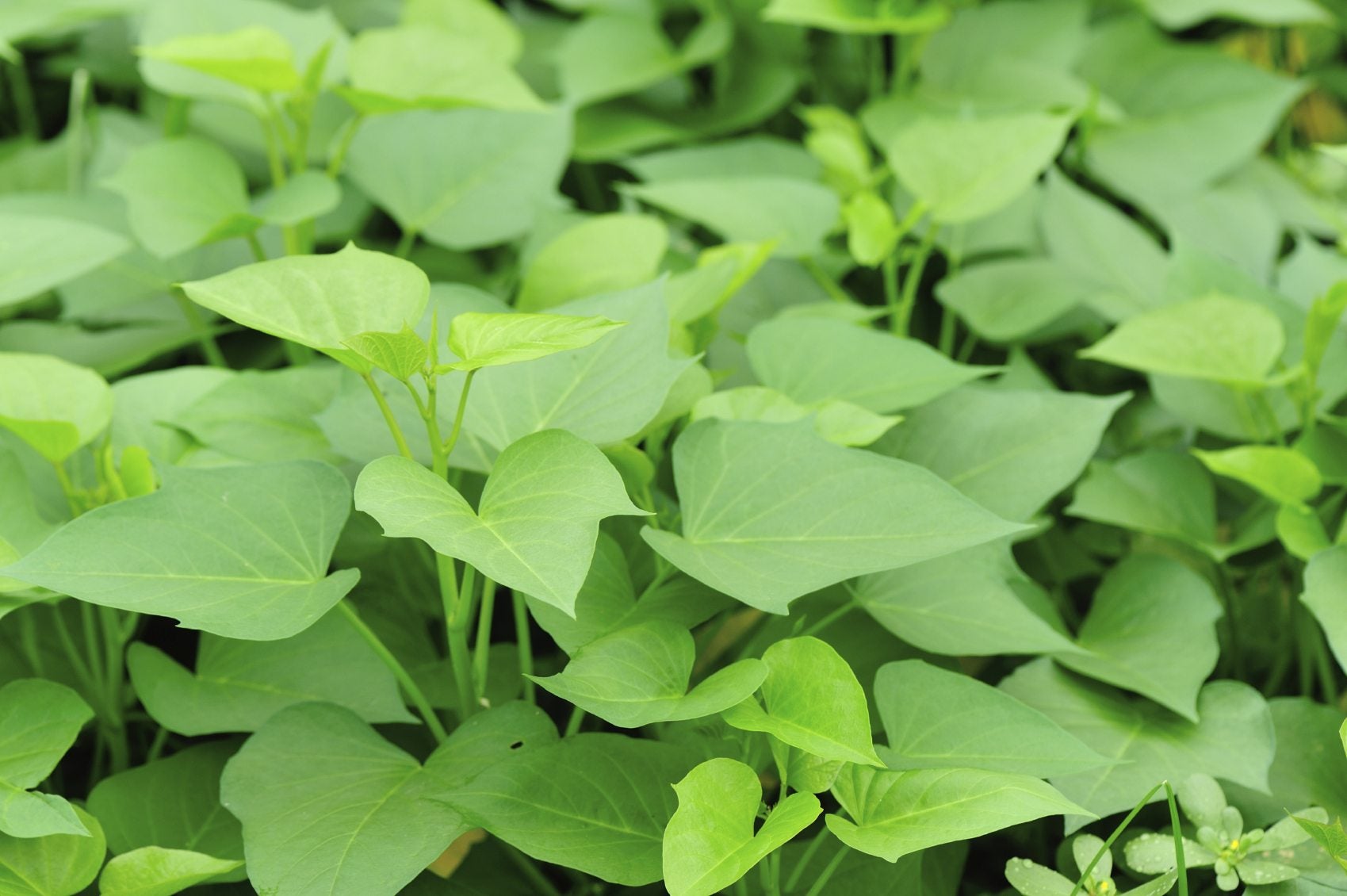Potato Vine Plant Leaves: Are Sweet Potato Leaves Edible?


In the United States, most gardeners grow sweet potatoes for the big, sweet tubers. However, the leafy green tops are edible too. If you’ve never tried eating potato vine leaves, you’re missing out on a tasty, highly nutritious veggie.
Are Sweet Potato Leaves Edible?
So, are sweet potato leaves edible? Yes, definitely! Next question: what are “camote tops?” The vines of sweet potatoes (especially the deep purple varieties), are known as camote tops (or kamote tops) in Spanish-speaking countries. No matter what you call them – sweet potato leaves, camote tops, or kamote tops – the vines are rich and flavorful, although like most greens they may be somewhat bitter. The leaves are prepared much like spinach or turnip greens. Boiling the sweet potato vine leaves in a small amount of water removes any toughness or bitterness. Once the sweet potato greens are tender, chop the leaves and use them in recipes or sauté them with butter and garlic, then splash the hot sweet potato greens with soy sauce or vinegar and a dash of salt.
Why Eating Potato Vine Leaves is Good for You
Potato vine plant leaves are packed with nutrients. For starters, the leaves are an excellent source of antioxidants and contain high levels of vitamin A and C, as well as riboflavin, thiamin, folic acid, and niacin. Sweet potato vine leaves also provide impressive amounts of fiber, along with calcium, magnesium, manganese, zinc, copper, potassium, and iron.
Growing Sweet Potato Greens
Of all the potatoes, sweet potatoes are easiest to grow. Plant the sweet potato “slips” in spring because sweet potatoes need four to six months of consistently warm weather. Sweet potatoes prefer sandy, well-drained soil, full sun, and plenty of space for the vines to spread. They love heat and won’t tolerate chilly weather or heavy, soggy soil. Give the plants a head start by digging a little compost into the soil before planting, but avoid high-nitrogen fertilizers. Newly planted potatoes like regular water, but once established, the plants require little moisture. Mulch between the plants to keep weeds in check. You can harvest sweet potato greens or young shoots any time during growth.
Sign up for the Gardening Know How newsletter today and receive a free copy of our e-book "How to Grow Delicious Tomatoes".

A Credentialed Garden Writer, Mary H. Dyer was with Gardening Know How in the very beginning, publishing articles as early as 2007.